Haida Village 1958–62
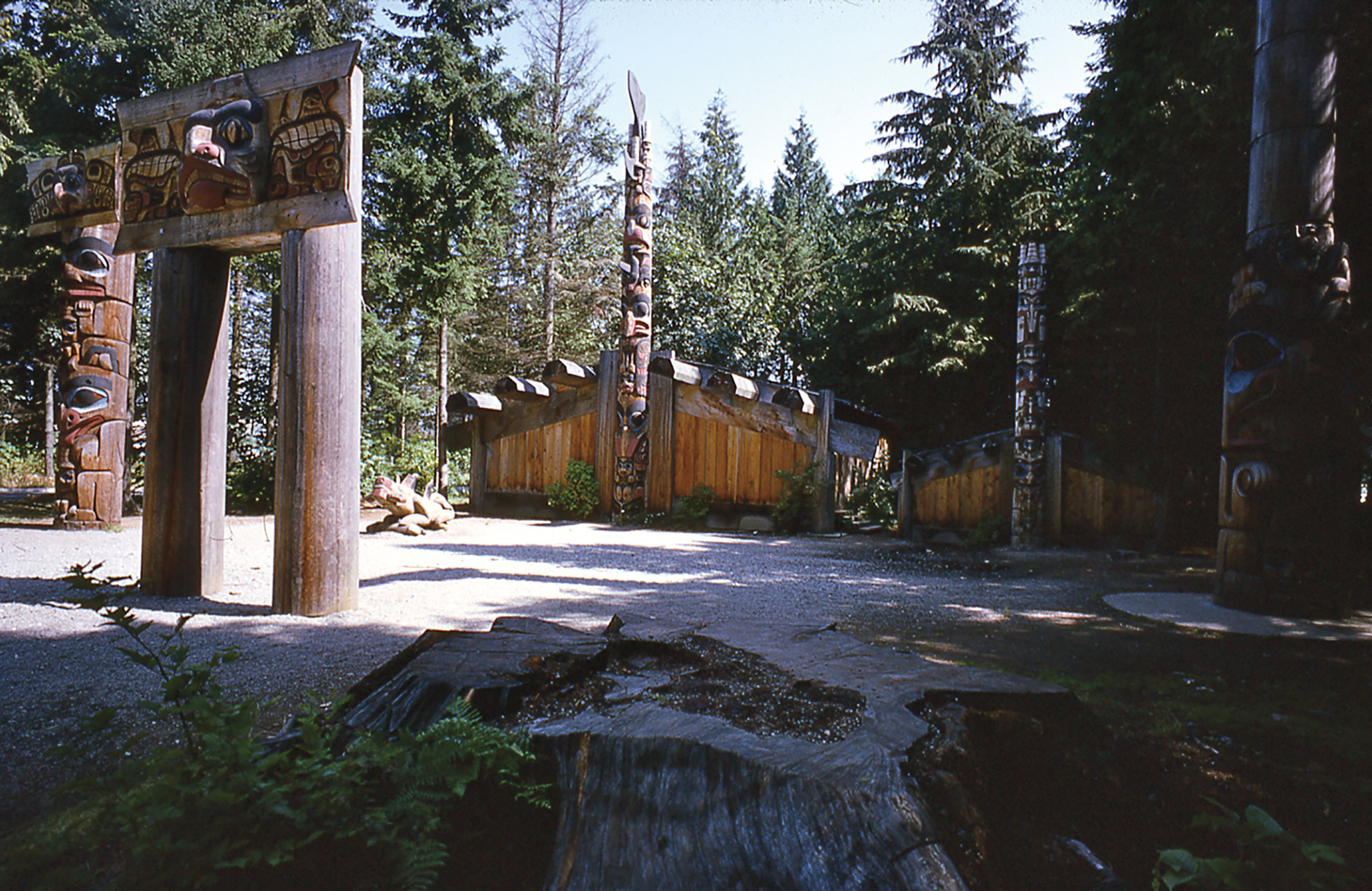
Bill Reid, Haida Village, 1958–62
Cedar and paint
Photograph by Adelaide de Menil, 1966
Constructed between 1958 and 1962, the Haida Village at the University of British Columbia in Vancouver stands today as an impressive showcase of Haida-style poles carved by Bill Reid with the assistance of Kwakwaka’wakw artist Doug Cranmer (1927–2006). It is an immersive installation that, in its initial inception and execution, aimed to reconstruct some elements of an authentic nineteenth-century Haida village based on the study and collection of the remains of historic village sites in Haida Gwaii.
The Haida Village includes a large family dwelling, a smaller mortuary chamber, and examples of interior, frontal, and mortuary poles. It was first installed at Totem Park, at the west end of the University of British Columbia’s campus, and was relocated in 1978 to be near the newly built Museum of Anthropology, which opened in 1980. In 2000 Reid’s House Frontal Pole was moved indoors for preservation and replaced with the Respect to Bill Reid Pole carved by Jim Hart (7idansuu, b.1952).
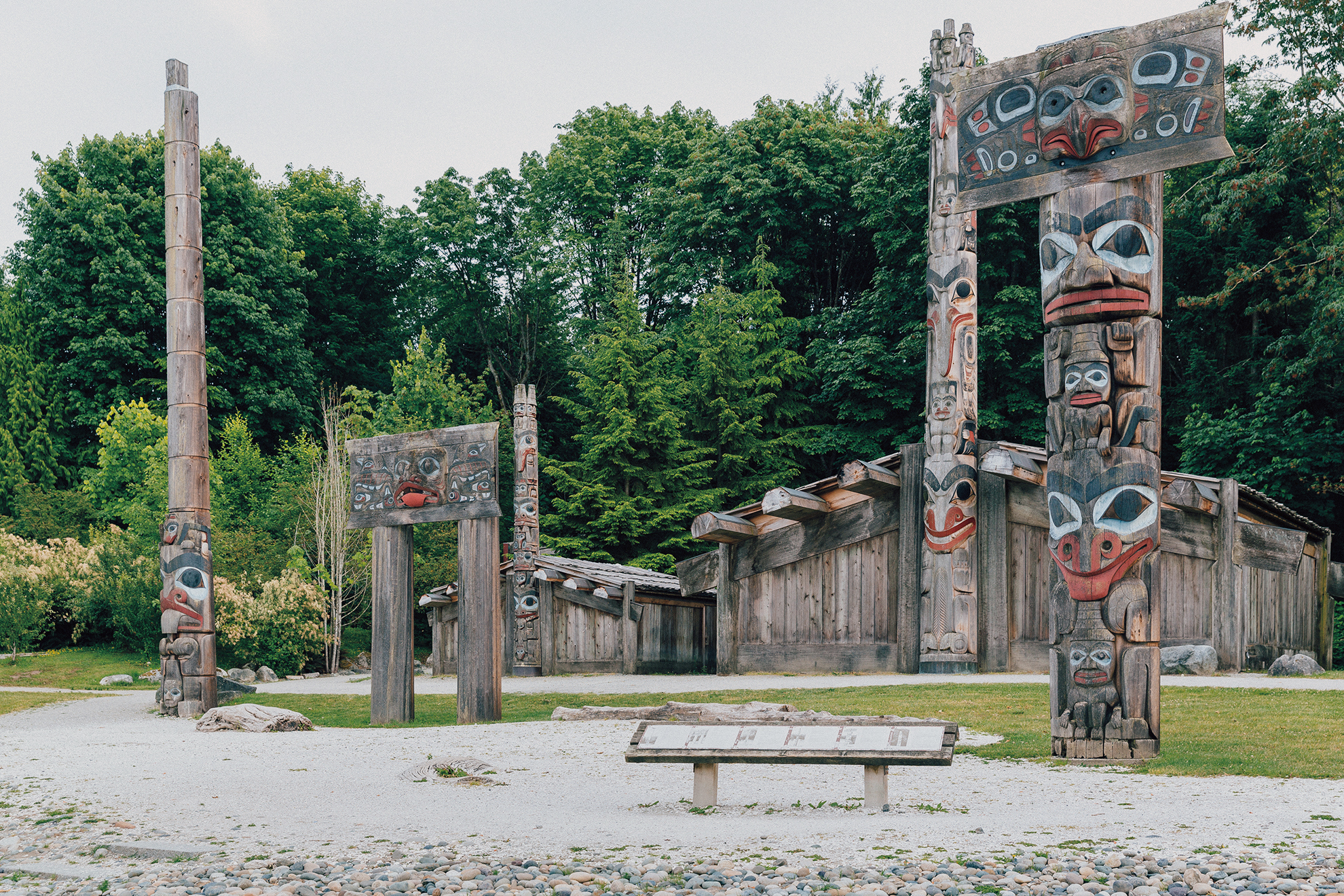
In 1954 and 1957 Reid participated in provincial museum collecting expeditions to the historic Haida sites of T’aanuu (T’aanuu Llnagaay), Skedans (K’uuna Llnagaay), and Ninstints (Nans Dins, SGang Gwaay Llnagaay). Some of these places became the models on which the new carvings for the Haida Village were based. With his limited experience carving poles at the time, Reid considered it an “extraordinary act of faith” when, in 1958, Harry Hawthorn (1910–2006) invited him to work with the poles in the University of British Columbia collection. Reid was thrilled to be leaving his work at the CBC and savoured the prospect of being “out of time in a kind of an encapsulated environment where we were playing 19th century Haidas.”
Initially, Hawthorn’s intention was to have Reid restore the old poles, but it was quickly established that carving new poles, based on those collected, made more sense. The first pole Reid and Cranmer carved was the frontal pole for the smaller mortuary chamber. With it, Reid aimed to accurately replicate a pole collected at Ninstints that revealed extraordinarily well-preserved and exquisitely carved detail. He experimented with various methods of planning the layout and transferral of the old forms to the new pole—sketching, making paper models, gradually scaling up clay models, and making full-scale paper templates that were quickly abandoned when the shape of the pole changed as its carving progressed. Finally, Reid carved up the right side of the pole while Cranmer mirrored the forms on the left. For Reid, “Each pole contained the essential spirit of the individual or family it commemorated, as well as the spirit of the artist who made it, and, by extension, the living essence of the whole people.”
The three and a half years Reid spent designing and building the Haida Village afforded him a kind of apprenticeship—one in which the instruction came through his time, labour, and proximity to the creations of master carvers of Haida history.

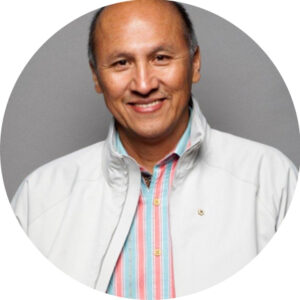 About the Author
About the Author
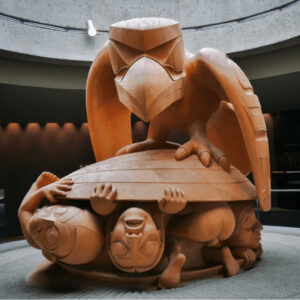 More Online Art Books
More Online Art Books
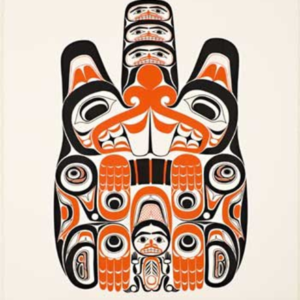 Acknowledgements
Acknowledgements